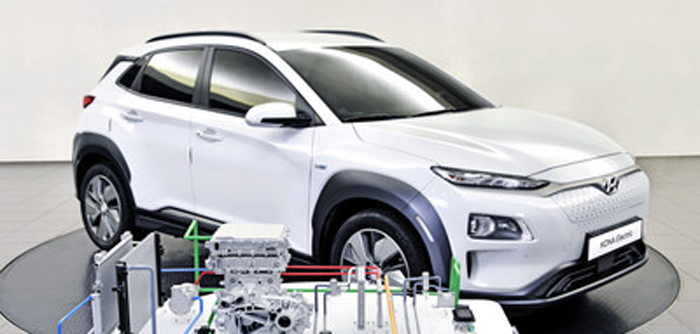Utilizing waste heat in EVs for functions such as cabin heating is key to maximizing the range of existing powertrain solutions. Manufacturers Kia and Hyundai claim to have been at the forefront of developing heat management systems for this purpose, having first introduced their heat pump technology in 2014 with the Kia Soul EV, and have now further developed this system’s heat management capabilities.
In the 2014 application, a compressor, evaporator and condenser system were used to scavenge heat from electrical components and use it for heating the cabin and warming sensitive components in cold weather. In the latest development of the system, the number of components heat is recovered from has been increased, as has the efficiency of the thermal exchange mechanism. The heat pump now harvests significantly more energy by recycling additional waste heat not only from power electrics (PE) modules (such as drive motors, onboard chargers, and inverters), but also from the battery pack and slow charger.
This captured energy improves the efficiency of the HVAC (heating, ventilation and air conditioning) system, recycling it to more efficiently heat up the cabin and minimize battery power consumption. By reducing the load on the battery, the heat pump cuts energy consumption from the HVAC system, maximizing the available electric driving range of the car.
As proof of the system’s effectiveness, the Norwegian Automotive Federation (NAF) recently compared 20 EVs in cold and warm weather conditions to identify models with the most consistent driving range and charging performance. The test monitored the performance deviation of each vehicle in cold conditions compared to quoted manufacturer figures.
The Kona Electric took first place, travelling 405km in the cold – compared with the 449km quoted under WLTP combined cycle testing conditions (23°C/73°F). In severe cold weather, the Kona Electric offered 91% of its WLTP combined cycle range, deviating just 9% from its claimed all-electric driving range. Partly thanks to its parsimonious use of power for cabin heating.


